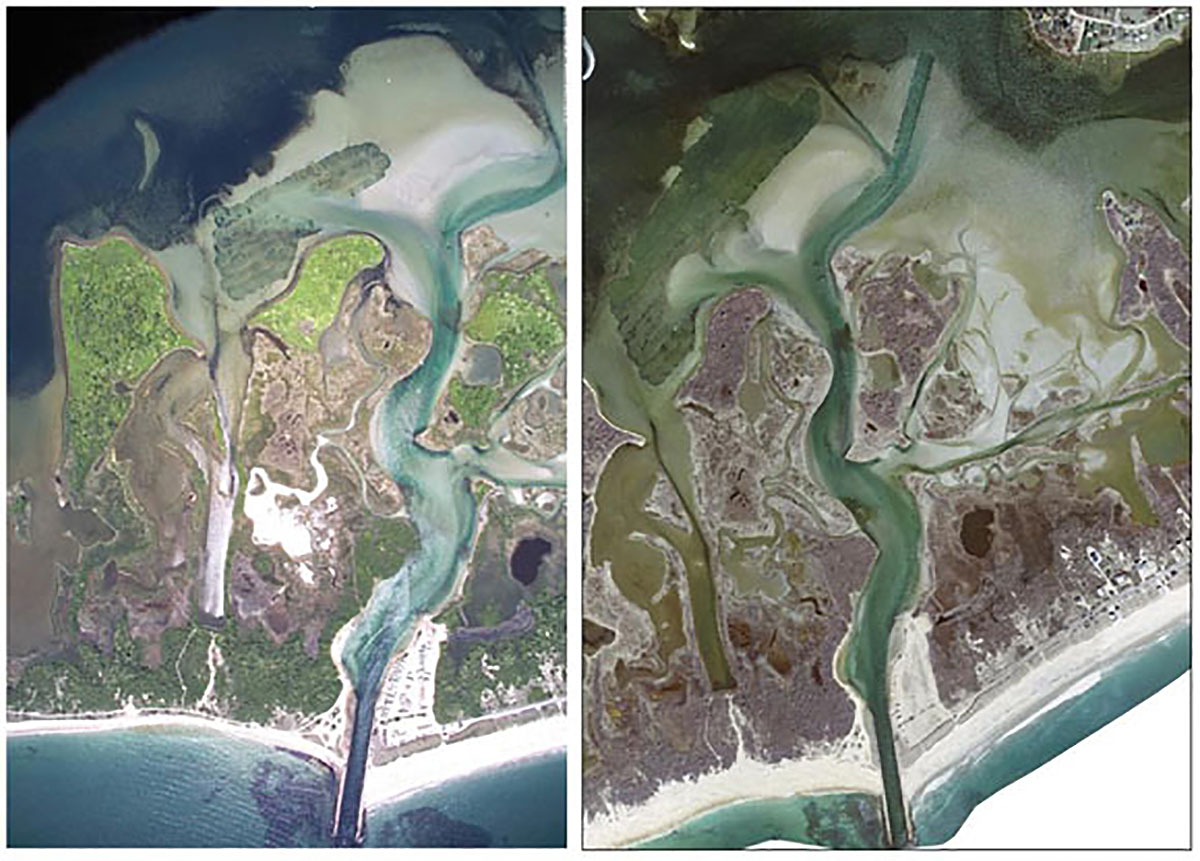
RI Coastal Resources Management Council
...to preserve, protect, develop, and restore coastal resources for all Rhode Islanders

...to preserve, protect, develop, and restore coastal resources for all Rhode Islanders
CRMC South Coast project receives Coastal America Partnership Award
January 12, 2009, WAKEFIELD – The Rhode Island Coastal Resources Management Council (CRMC) recently received national recognition for one of its habitat restoration projects. Coastal America, launched in 1991 as a collaboration between federal, state and local governments and other groups to solve coastal problems, awarded the CRMC and its partners with the 2008 Coastal America Partnership Award for its work on the South Coast Habitat Restoration Project.
Project sponsors include the U.S. Army Corps of Engineers (USACE) and the CRMC, with support from the R.I. Department of Environmental Management (DEM) the University of Rhode Island, the Salt Ponds Coalition, and the towns of South Kingstown, Charlestown and Westerly.
In 1952 the State widened and deepened the natural tidal inlet to Ninigret Pond to create the Charlestown Breachway, with stone jetties constructed along either side in order to maintain the breachway for navigation. The construction of the jetties created a natural funnel effect that deposited large amounts of sand from the ocean inside the Ninigret Pond. As this continued to occur over the years, formerly plentiful eelgrass beds covering the pond bottom were buried.
The CRMC and its partners began work on the South Coast project in 1997. The habitat restoration portion of the project included restoring 40 acres of eelgrass habitat within Ninigret Pond, the largest of the salt ponds. The tidal delta in the pond was dredged to create a favorable environment for regrowing eelgrass. The Army Corps also constructed a catchment basin in the breachway inlet in order to capture sediment coming in before it emptied into the pond. Sand that was dredged from the pond was pumped just offshore of the adjacent beaches, so that the natural wave movement would deposit the sand along the shoreline. Within the first year of monitoring the eelgrass had regenerated successfully in both the seeded eelgrass beds and areas that were allowed to grow back naturally, Eelgrass growth has exceeded project expectations. The CRMC expects to perform a maintenance dredging of the catchment basin in 2009.
“The CRMC is honored to receive this prestigious award from Coastal America, and we are thrilled that the South Coast Habitat Restoration Project has received this distinction,” said CRMC Chairman Michael M. Tikoian. “The South Coast project is the largest habitat restoration project that the Council has taken on to-date, and we consider it an immense success. I appreciate the hard work of the CRMC staff, especially Janet Freedman, as well as our other project partners. The CRMC would also like to thank Senator Jack Reed for his efforts in Washington and his continued support of this and other restoration projects; he was instrumental in garnering appropriations for this project. The South Coast project is a shining example of the working partnerships in Rhode Island and the importance of habitat restoration.”
“I congratulate CRMC on this award, and I am proud to have secured federal funding over the years for Ninigret Pond and other habitat restoration projects along Rhode Island’s south coast,” said Senator Jack Reed (D-RI), a member of the Appropriations Committee. “These projects benefit our coastal environment and help support our state’s shellfishing industry and many other commercial fisheries that depend on coastal habitats.”

This photo at left shows Ninigret Pond before the completion of the dredging and eelgrass habitat restoration, and at right, after.